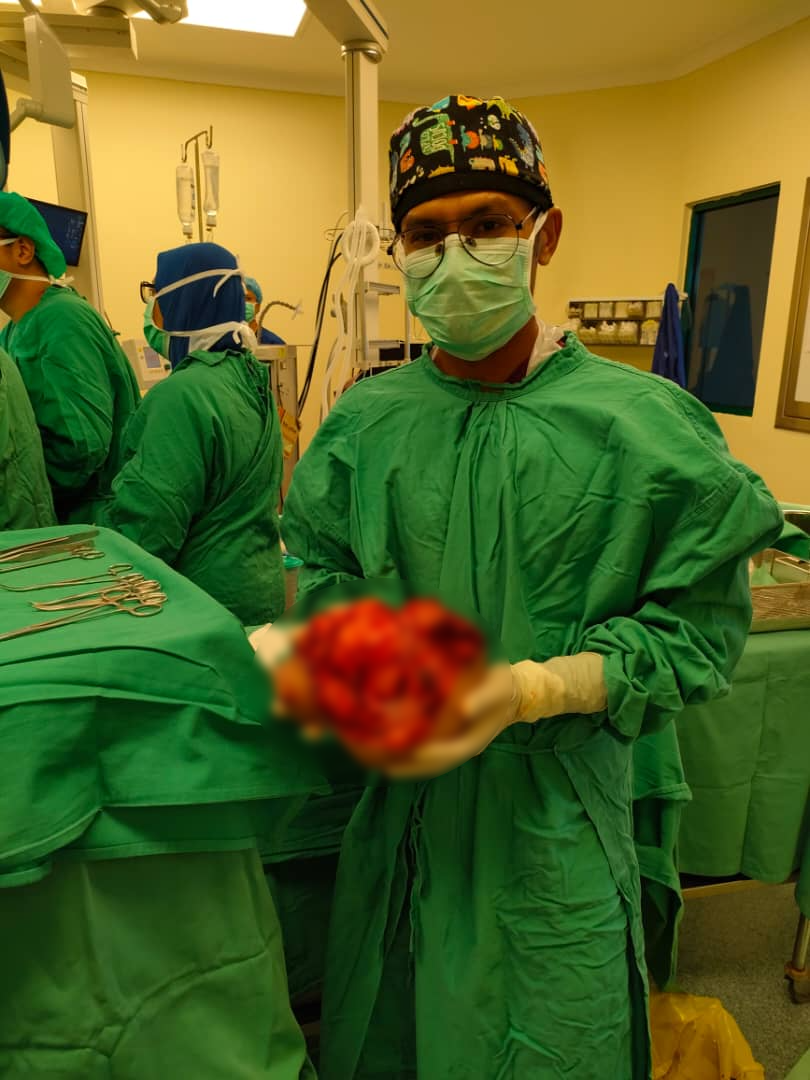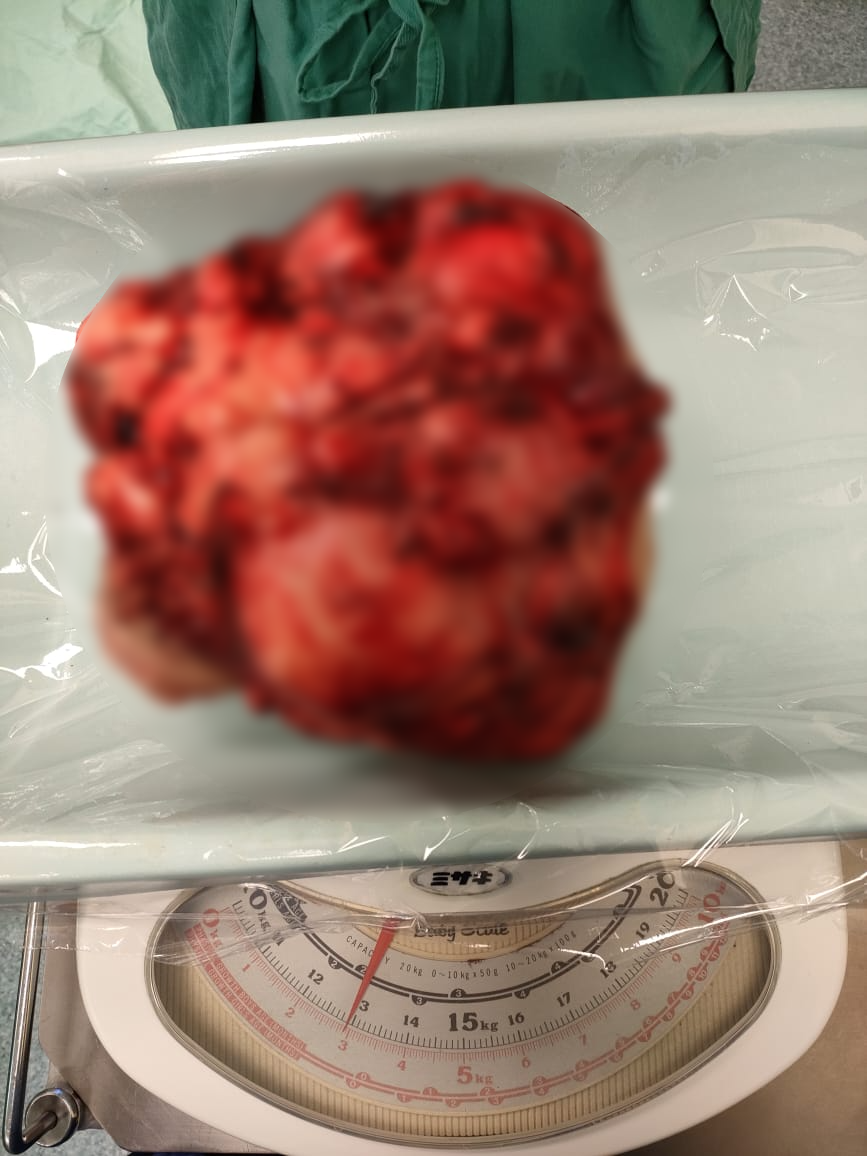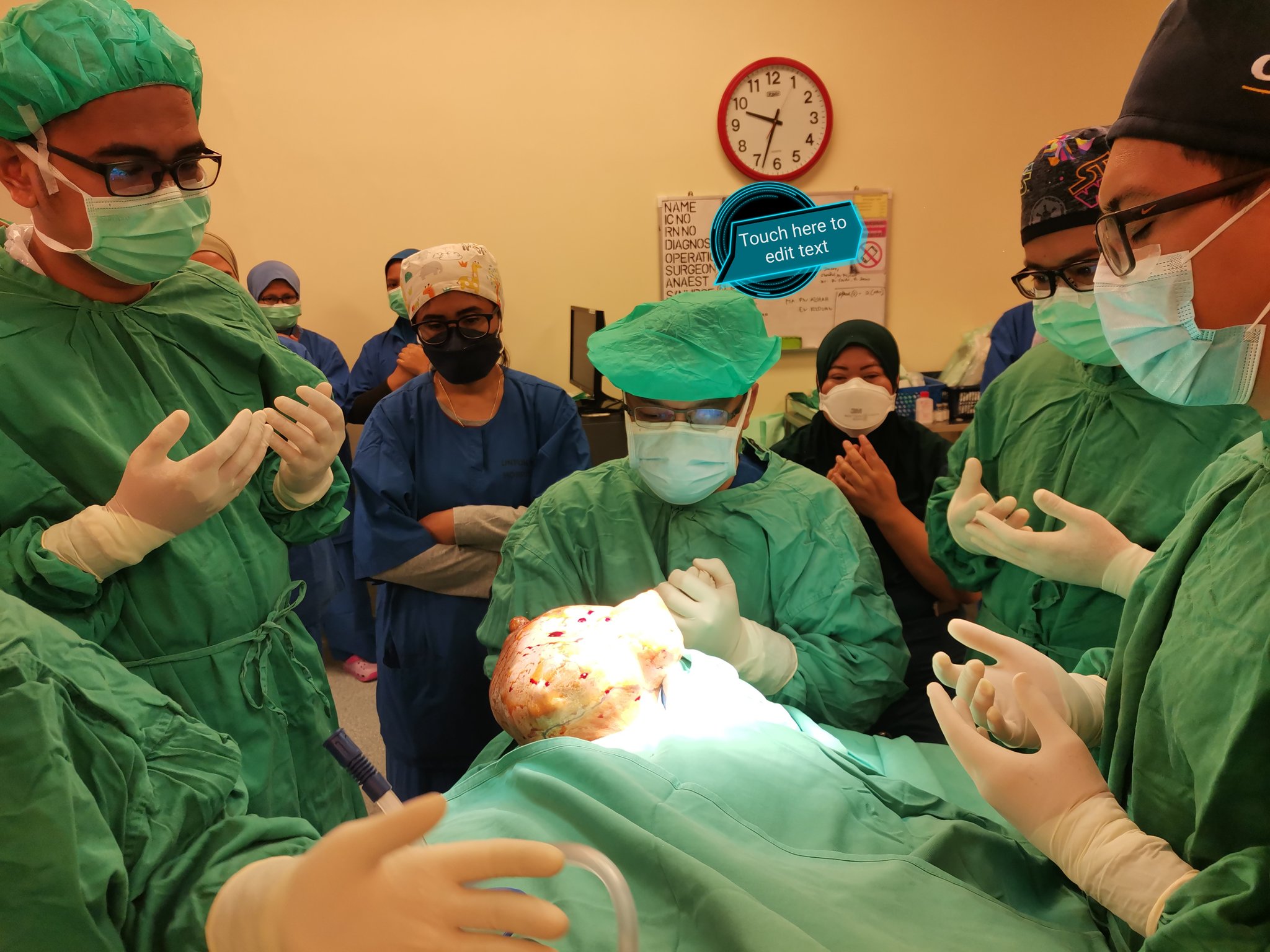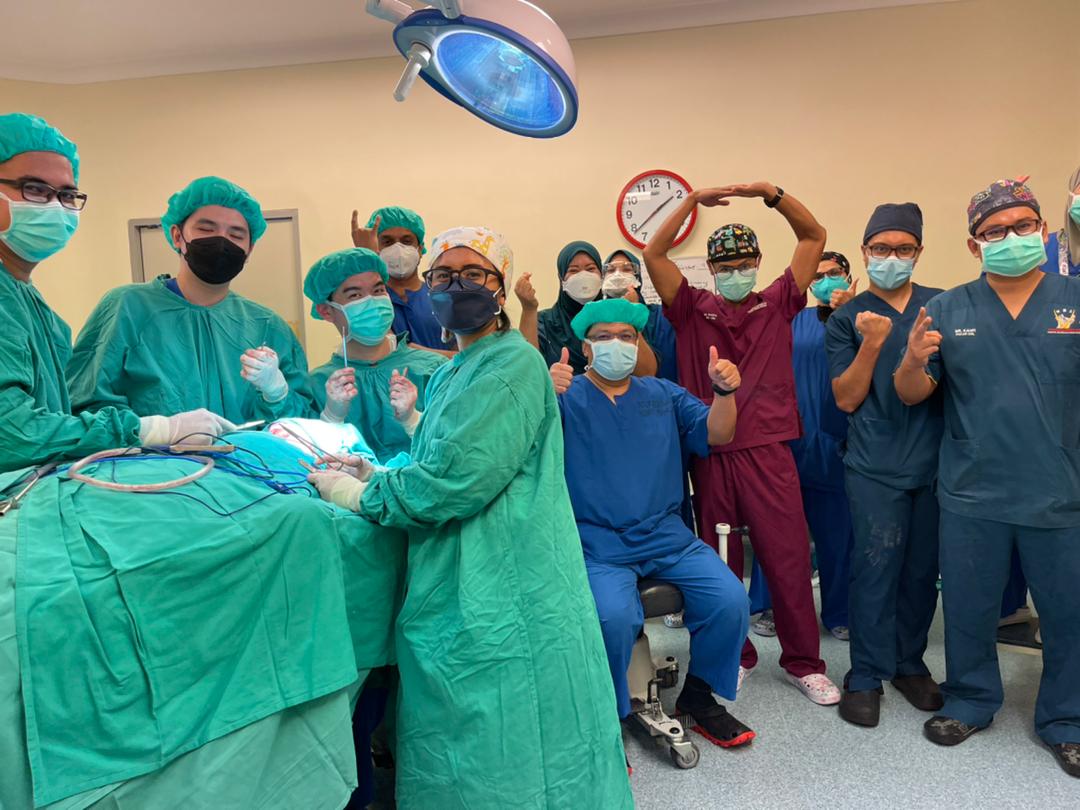[PHOTOS] Doctor Shares Successful Removal Of 3KG Tumour From Patient's Neck In Viral Tweet
The patient decided to remove the growth in his neck after eight years because its size made it too difficult to perform prayers.
Subscribe to our Telegram channel for our latest stories and breaking news.
Disclaimer: The following story contains photos that may be uncomfortable to some.
A tumour weighing 3kg that had been growing in a man's neck for almost eight years has been successfully removed recently
Ear, Nose and Throat (ENT) specialist, Dr Mohd Shaiful Nizam took to Twitter to share the experience on 27 February, along with some pictures post-operation.
According to him, the growth was a salivary gland tumour and the patient decided to undergo surgery after eight years because it had become difficult for him to perform prayers due to its size.
"In the beginning, it was only as small as 4cm x 5cm, but now it has grown to 20cm x 30cm," he said.
To put that in perspective, a piece of A4-sized paper is 21cm x 29.7cm.
In his 11 years of service as a doctor, this was his first encounter of a tumour that size.
Dr Shaiful holding the 3kg salivary gland tumour after he and his team successfully removed it from the patient's neck.
Image via @Dr_Shaiful (Twitter)The surgery took five hours to complete, assisted by Head and Neck Surgery consultant specialist Professor Razif and other medical team members
"Our five-hour surgery was successful without any serious complications," he tweeted.
According to him, the first words the patient uttered after the operation were, "Doctor, thank you very much. I'm no longer in pain and my head no longer feels heavy. It's more comfortable."
"Alhamdulillah, we as the surgeons feel happy and overwhelmed."
Before the procedure, the tumour was 20cm x 30cm in size after growing in the patient's neck for almost eight years. The patient gave his permission for his condition and pictures of his surgery to be shared online for learning purposes.
Image via @Dr_Shaiful (Twitter)The ENT surgeon also advised Malaysians to get an immediate examination if they find any tumour growing in their body
"[A] swelling/tumour in the neck that does not disappear after antibiotic treatment of more than a month should be examined closer by an ENT specialist or surgeon. Several examinations and laboratory tests including X-ray/ultrasound/CT scans will be performed, if necessary," Dr Shaiful pointed out.
"Surgery in the early/minor stages can reduce the risk of injury to surrounding blood vessels, nerves, and anatomical structures," he explained.
"The healing process is also faster."
Dr Shaiful and the surgical team posing happily after the removal of the tumour was completed.
Image via @Dr_Shaiful (Twitter)



